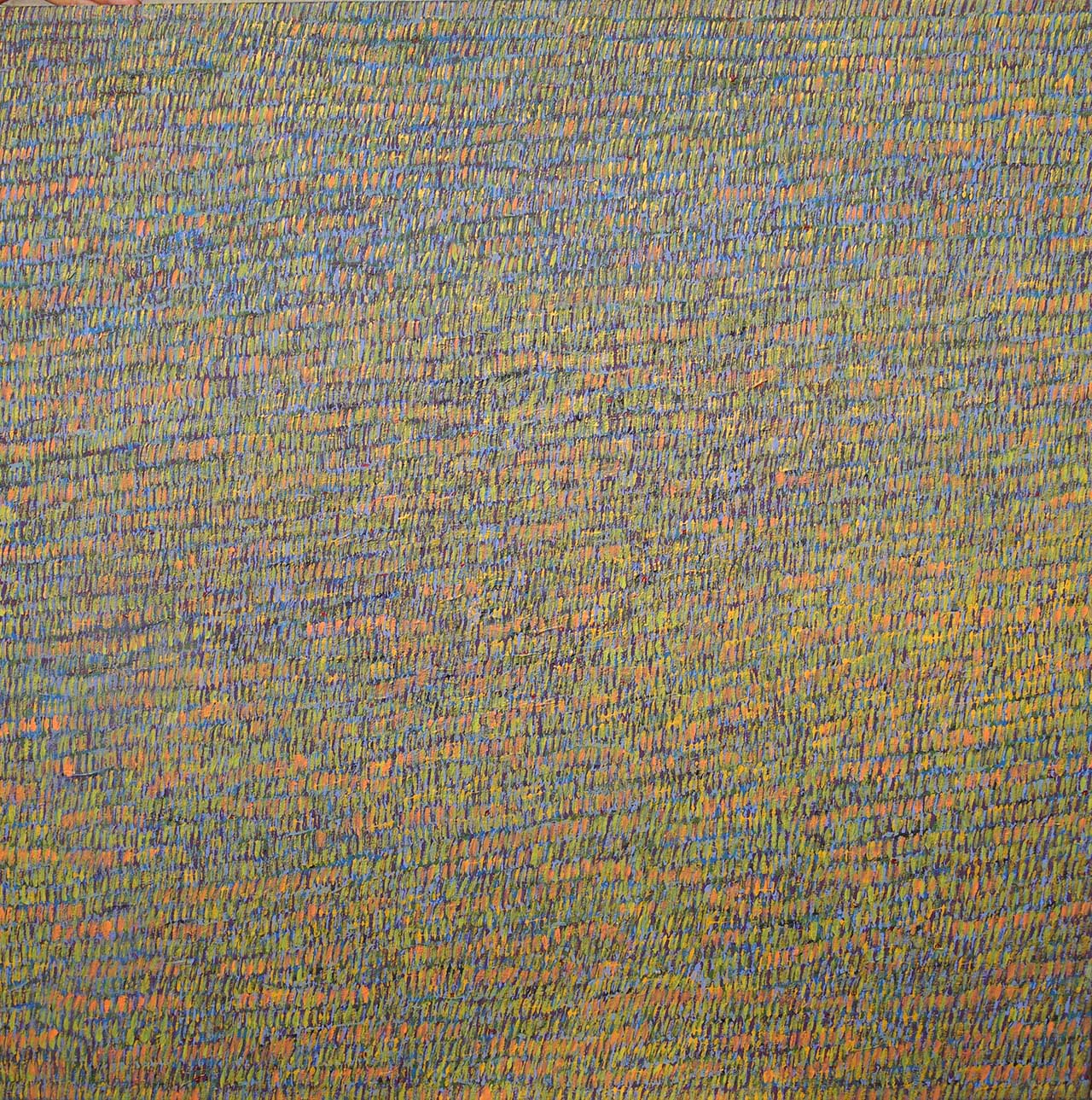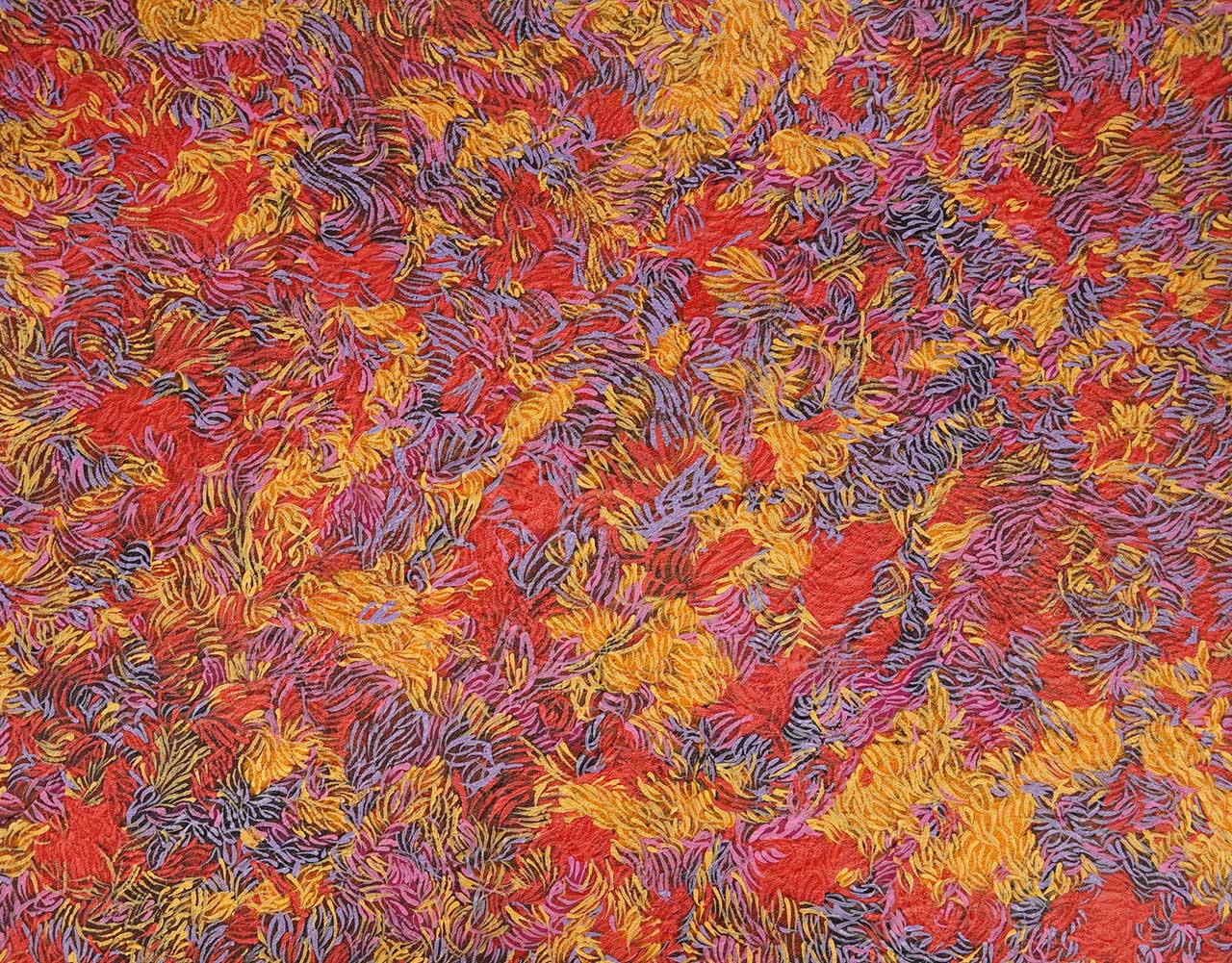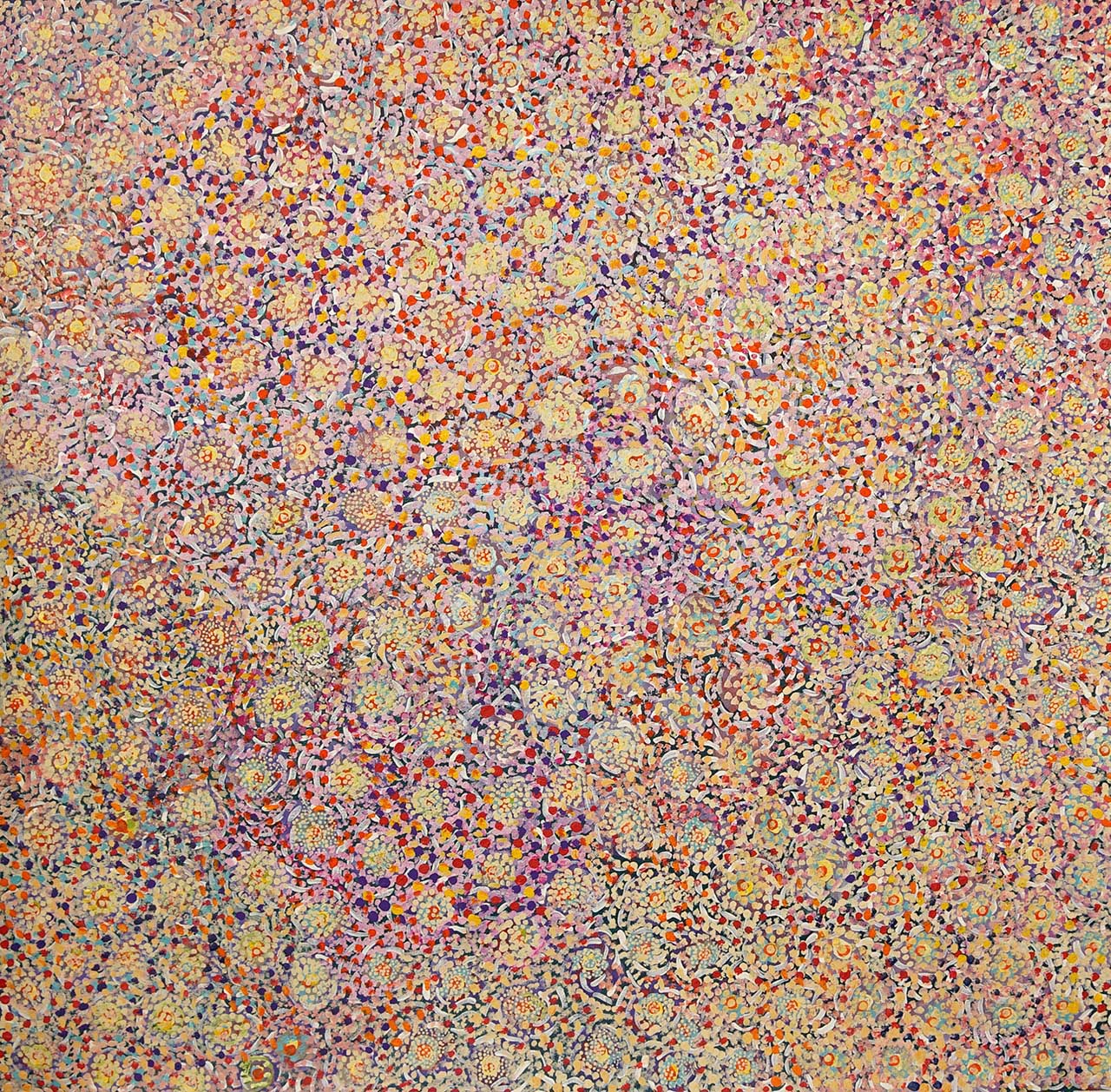Yinjaa-Barni Celebrate Marrga Creation Dreaming Stories
It’s wonderful to have the artists from Yinjaa-Barni as regular exhibitors at Japingka Gallery. They work from their Art Centre in Roebourne and have been developing their art steadily for 15 years or more. One of the features of their work is that they refer to their homelands along the Fortescue River.
They tell stories of the landscape and the regeneration of the plants and the changes of the seasons. There are images of the geology of the rocks, the ochre layers and the eroded and fractured surface of the landscape in that intense climate of the Pilbara.

The paintings of nature show the country after rain when the wildflowers, the trees and bush plants are coming into bloom. These are beautiful paintings of regrowth in nature from the Pilbara.
This isn’t normally what we think about when we think of the Pilbara. We know it’s red, it’s dusty, and it’s basically associated with the mining industry.
The Yinjaa-Barni people belong to a region along the Fortescue River. They talk about the Marrga, which is the Creation time in Yinjaa-Barni mythology. How the Ancestor spirits create the earth from the smoke that drifted out from their fires.
The strands of smoke became the ethereal shape of the earth, and it was soft in the beginning, then it formed into the land. It’s a timeless Creation Story that remains embedded in all the unique elements of the Pilbara that the artists paint.
This exhibition brings together a fine group of artists, with ten artists exhibiting, and each has their own distinctive style and approach. The best known artists in the group are Clifton Mack and Marlene Harold.

Clifton has a gorgeous painting as the feature painting in the show. It reads like a landscape. Clifton typically creates these long bands of broken shapes that are all made up of layers of marks – lines laid over the top of each other. It is like the cracking of the surface of the earth, of the rocks in that part of the country.
The large work has a beautiful colour scheme where orange tones react to a mauve-grey colour and then to the darker colours of the background. Clifton takes a lot of time to build up the surfaces. He puts tiny marks over each other, just building up the surface. It really is a beautiful image of a Pilbara landscape seen from an Indigenous experience.
Marlene Harold paints a story that she titles In the Beginning, or When the World was Soft. This is the story from the mists of Creation, when the world was being formed out of the smoke of the Ancestor’s fires.
Her work is a combination of dots and dashes – multi -layered veils of colour sitting over each other. There’s the grass and a sense of smokiness drifting over the whole painting, a haze of colour that is the origin of the Creation Story.

Melissa Sandy has painted some fantastic versions of the Country coming into flower. They are titled “Burst of Spring” and “Purple Mulla Mulla”, describing the native plants coming into bloom. They’re colourful but also harmonious, with the rich colours creating a depth of field in the paintings. This makes for really complex patterns that beautifully interweave all the colours.
There’s some amazing paintings by Allery Sandy that could best be described as aerial images of the Pilbara. You can see the rivers flowing through the gorges, and the orange and red colours of the Pilbara earth. You can see patches of green where areas of trees and shrubs are growing. One of these paintings is like an organic tree with earthy orange colours – it forms the gorges and the places where life bursts into regeneration every season.

We love the work of these artists, having visited their community many times as well as having numerous visits from the artists for prior exhibitions. Their work is always both intriguing and encouraging. It gives you a great sense of Western Australian landscape from that part of the country.
The quality of this collection makes you think all these artists are putting everything into their paintings. You can feel the commitment. There is a fantastic layering of colour and texture. Once all the works are up on the walls you can see the immense variety within the exhibition. The whole event gives a great sense of the landscape and the important qualities that these artists respect in their own country
View More:
